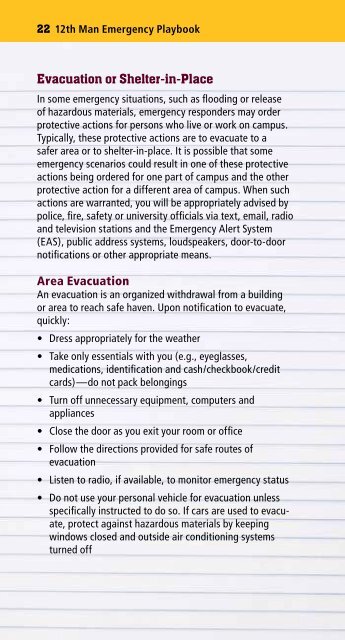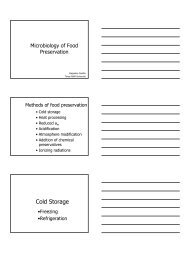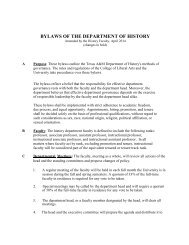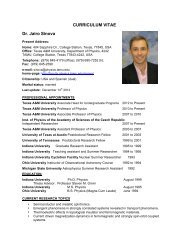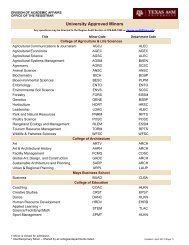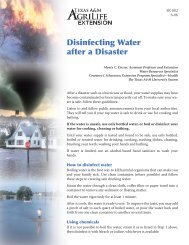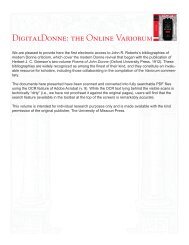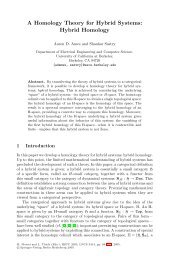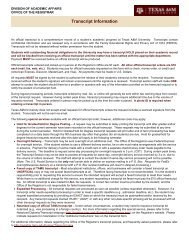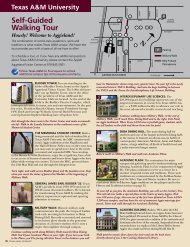12th Man Emergency Playbook - Texas A&M University
12th Man Emergency Playbook - Texas A&M University
12th Man Emergency Playbook - Texas A&M University
- No tags were found...
You also want an ePaper? Increase the reach of your titles
YUMPU automatically turns print PDFs into web optimized ePapers that Google loves.
22 <strong>12th</strong> <strong>Man</strong> <strong>Emergency</strong> <strong>Playbook</strong>Section 3: Fire/HazMat 23Evacuation or Shelter-in-PlaceIn some emergency situations, such as flooding or releaseof hazardous materials, emergency responders may orderprotective actions for persons who live or work on campus.Typically, these protective actions are to evacuate to asafer area or to shelter-in-place. It is possible that someemergency scenarios could result in one of these protectiveactions being ordered for one part of campus and the otherprotective action for a different area of campus. When suchactions are warranted, you will be appropriately advised bypolice, fire, safety or university officials via text, email, radioand television stations and the <strong>Emergency</strong> Alert System(EAS), public address systems, loudspeakers, door-to-doornotifications or other appropriate means.Area EvacuationAn evacuation is an organized withdrawal from a buildingor area to reach safe haven. Upon notification to evacuate,quickly:• Dress appropriately for the weather• Take only essentials with you (e.g., eyeglasses,medications, identification and cash/checkbook/creditcards)—do not pack belongings• Turn off unnecessary equipment, computers andappliances• Close the door as you exit your room or office• Follow the directions provided for safe routes ofevacuation• Listen to radio, if available, to monitor emergency status• Do not use your personal vehicle for evacuation unlessspecifically instructed to do so. If cars are used to evacuate,protect against hazardous materials by keepingwindows closed and outside air conditioning systemsturned offIf you need special assistance, contact your ResidentAdvisor, Building Proctor or other appropriate emergencycontact. If these persons are not available, call <strong>University</strong>Police Dispatch at (979) 845-2345 for assistance.For detailed information on a campus-wide evacuation,please see page 11: Campus-wide Bomb ThreatEvacuation Procedures.Shelter-in-PlaceWhen emergency conditions do not warrant or allowevacuation, the safest method to protect individuals may beto take shelter inside a campus building and await furtherinstructions.• Move indoors or remain there—avoid windows and areaswith glass• If available, take a radio or television to the room to trackemergency status• Keep telephone lines free for emergency responders.Do not call 911 for information.If hazardous materials are involved:• Turn off all ventilation systems and close all inlets fromthe outside• Select a room(s) which is easy to seal and, if possible, hasa water supply and access to restrooms• If you smell gas or vapor, hold a wet cloth loosely overyour nose and mouth and breathe through it in as normala fashion as possibleSeek AppropriateShelter Such as SmallInterior Rooms, InteriorHallways or Basements.


